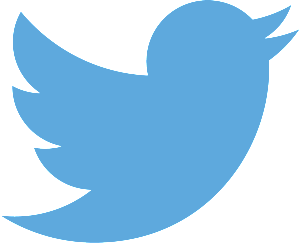
Can 140 character messages be a real form of correspondence? Does Twitter have personal communications value beyond news and marketing? Curious as to what role it can play in social correspondence, I recently became a registered subscriber, ready to explore this social networking and microblogging site.
Twitter is one of my workplace neighbors. In what is known as the mid-Market area of San Francisco, near the Civic Center, significant change has taken place in recent years, change that continues to transform a neighborhood. This once blighted area, victim of a now defunct freeway constructed over six decades ago that cut through the heart of the commercial district, is undergoing a renaissance. New office buildings and condo and rental complexes are literally springing from holes in the ground into the air at a dizzying rate.
In a grand old building first built in 1937 to house a furniture and design center, Twitter opened its new headquarters in 2012, leading the way to dynamic change in a neighborhood that had stagnated for years. Twitter, as part of an economic boom cycle, led the way for other new businesses to open up in the area, most notably tech-related companies such as Square, Spotify, Zoosk and Zendesk, as well as enabling some long stalled construction projects to move forward.
Twitter and other businesses also have inspired the opening of some delightful new amenities in the neighborhood. Coffee shops and restaurants, and Littlejohn’s Candies, an artisan toffee and chocolate shop, have appeared in what once were most unlikely locations. One of my favorites, Ma’velous, is a hipster gourmet coffee shop, where a serious but friendly young man with a waxed moustache creates each cup of coffee as a work of art.
In a typical scene one recent afternoon, a preppy looking young man, dressed in jeans and a crisp lavender shirt, was, of all things, reading a print newspaper, chuckling quietly. A paperback novel rested nearby on the table, untouched. He picked up his smart phone and sent off a quick text message – perhaps a tweet? – then gathered up his belongings and headed out. Did he come up with a great new idea for a start-up? Good news in the industry? Whatever it was that made him happy, he demonstrated that tech employees are never not on the job. Nor do they take long coffee breaks.
Twitter and others strive to be good neighbors through their social actions, ranging from picking up litter, volunteering at community events and otherwise donating time and resources. The city in turn has rewarded these new businesses with a generous tax break.
But the media and technology surge in the City is not without its detractors. The cost of housing has become astronomical, squeezing out low and middle-income individuals and families.
A concentration of tech wealth also drives out other businesses, such as the venerable Flax store, a unique emporium which sells fine art and paper supplies, pens, stationery, cards, albums and more. Flax has responded by opening a second store in San Mateo, and searching for a new, smaller location in San Francisco. The current location, where Flax has been in business for 37 years, is being replaced by a nine-story, 160-unit condo building.
The boom cycle of the tech industry also is bringing higher density to the City. While this economic growth brings new revenue, there are related concerns, including the fear of over reliance on a single sector of the economy, as well as changes to neighborhood character that result from taller buildings and increasing population density in a city that has limited available space to grow.
Twitter, founded in 2006, has added new dimensions to on-the-go communications, going beyond the capabilities of text or email message. Twitter messages, though brief, can be clever, pithy, and broadcast in real time, either to select recipients, or to groups, or to the Twitter world at large. According to the Twitter website, there are 255 million active monthly users who send over 500 million tweets per day. The company has over 3,000 employees in offices around the world.
It seems that I am now a “tweep.” Online dictionaries give various definitions of this word. Oxford Dictionaries defines tweep as a follower on Twitter, with the word originating as a blend of Twitter and “peeps.” Other online dictionaries, including Merriam Webster, give a more inclusive definition of tweeps, to include all users of Twitter, both followers and senders. For now, I am among the 44% of registered users who have yet to tweet a message, which is yet another definition of tweep.
Although my own incoming tweets, set according to preference, are mostly news alerts, Twitter’s trending topics appear to skew heavily to pop culture. While it seems unlikely that a discussion about letter writing and communications will replace tags relating to “Biebs” anytime soon, at least I can watch all the newest cute animal videos.



